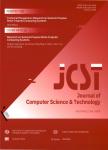Modeling Temporal Dynamics of Users' Purchase Behaviors for Next Basket Prediction
作者机构:School of Computer ScienceBeijing University of Posts and TelecommunicationsBeijing 100876China Department of Computer ScienceRutgers UniversityNew Jersey 07450U.S.A. Institute of SoftwareChinese Academy of SciencesBeijing 100190China Institute of Computing TechnologyChinese Academy of SciencesBeijing 100190China
出 版 物:《Journal of Computer Science & Technology》 (计算机科学技术学报(英文版))
年 卷 期:2019年第34卷第6期
页 面:1230-1240页
核心收录:
学科分类:0808[工学-电气工程] 0809[工学-电子科学与技术(可授工学、理学学位)] 08[工学] 0835[工学-软件工程] 0701[理学-数学] 0811[工学-控制科学与工程] 0812[工学-计算机科学与技术(可授工学、理学学位)]
基 金:This research work was supported by the National Natural Science Foundation of China under Grant Nos.61802029,and 61602451 the Fundamental Research for the Central Universities of China under Grant No.500419741
主 题:sequential recommendation dynamic representation next basket recommendation
摘 要:Next basket prediction attempts to provide sequential recommendations to users based on a sequence of the user s previous purchases. Ideally, a good prediction model should be able to explore the personalized preference of the users, as well as the sequential relations of the items. This goal of modeling becomes even more challenging when both factors are time-dependent. However, existing methods either take these two aspects as static, or only consider temporal dynamics for one of the two aspects. In this work, we propose the dynamic representation learning approach for time-dependent next basket recommendation, which jointly models the dynamic nature of user preferences and item relations. To do so, we explicitly model the transaction timestamps, as well as the dynamic representations of both users and items, so as to capture the personalized user preference on each individual item dynamically. Experiments on three real-world retail datasets show that our method significantly outperforms several state-of-the-art methods for next basket recommendation.



